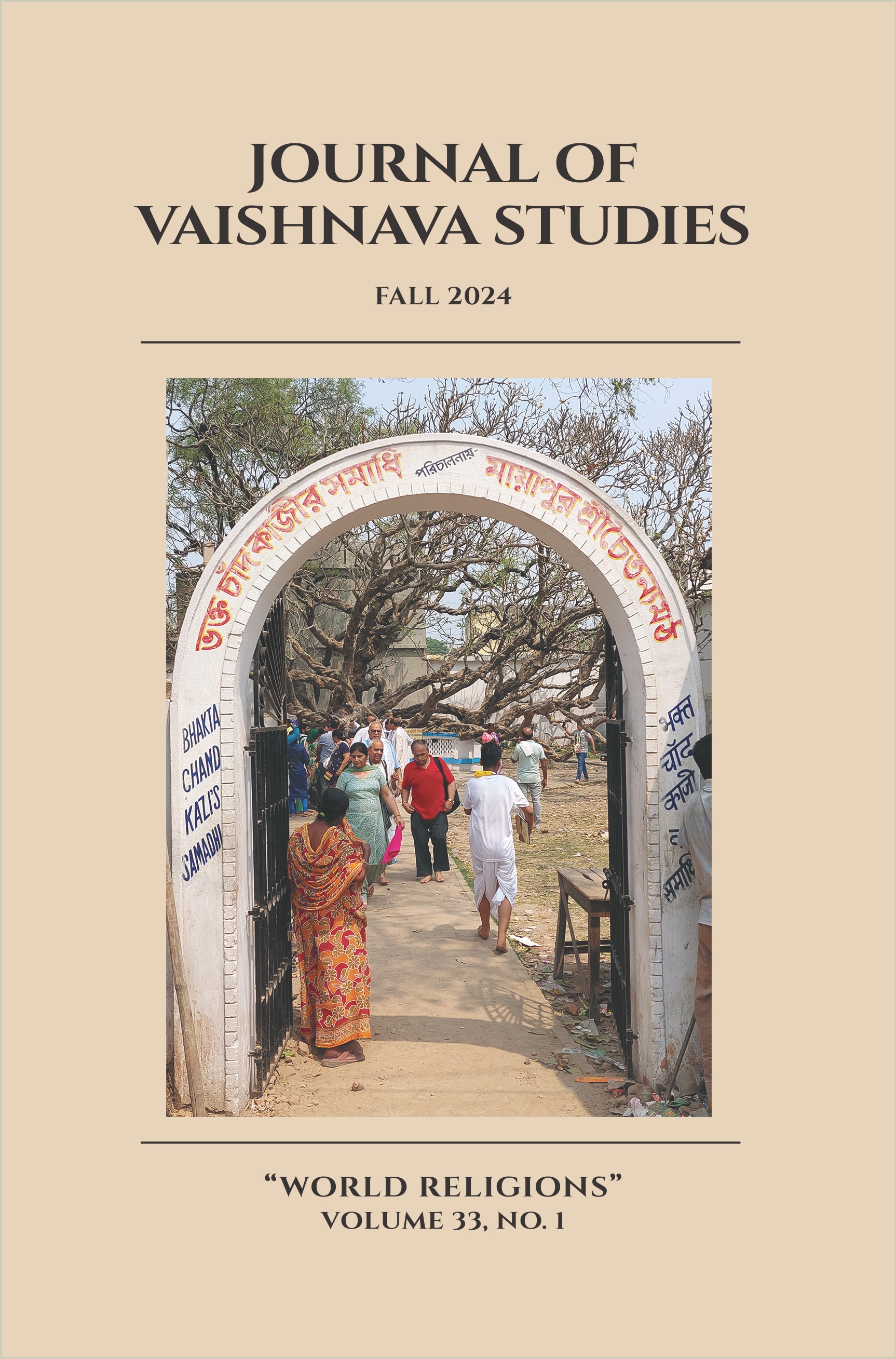The Jīva Gosvāmī’s Theological Bricolage
Constructing Caitanya Vaiṣṇava Theology Out of the Religious "Other"
Keywords:
Jīva Gosvāmī, Ṣaṭ-sandarbha, Caitanya Vaiṣṇavism, Advaita Vedānta, Viśiṣṭādvaita, theological bricolage, religious syncretism, Hindu philosophy, bhakti, mokṣaAbstract
This article examines Jīva Gosvāmī’s Ṣaṭ-sandarbha as a case study in theological bricolage, analyzing how the 16th-century Gauḍīya Vaiṣṇava theologian selectively appropriated and repurposed materials from rival Hindu traditions—notably Advaita Vedānta and Viśiṣṭādvaita—to construct a systematic Caitanya Vaiṣṇava theology. Framed by postcolonial critiques of "religion" as a Western construct, the study highlights Jīva’s dual strategies: (1) legitimation through citation of authoritative sources (e.g., Jāmātṛmuni’s Viśiṣṭādvaita ontology of the self) to avoid charges of innovation, and (2) superordination by hierarchically subsuming Advaita’s impersonal Brahman as Kṛṣṇa’s effulgence. Jīva’s eclecticism reveals tensions, such as using Viśiṣṭādvaita resources to undergird Advaita-style liberation (sāyujya), while positioning bhakti as a fifth puruṣārtha beyond mokṣa. The article argues that Jīva’s mosaic theology—woven from "opponent others"—demands contemporary Caitanya Vaiṣṇavas acknowledge their indebtedness to rival traditions, even as it reconfigures their doctrines within a Kṛṣṇa-centric hierarchy.Published
2024-12-13
Issue
Section
Articles





